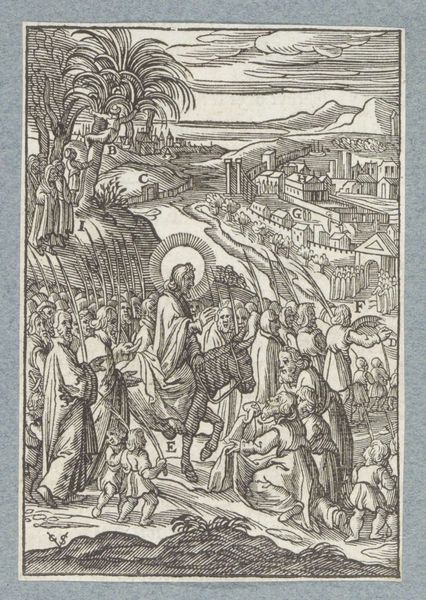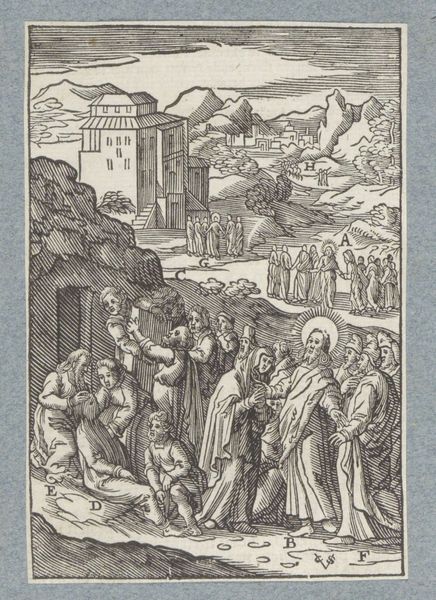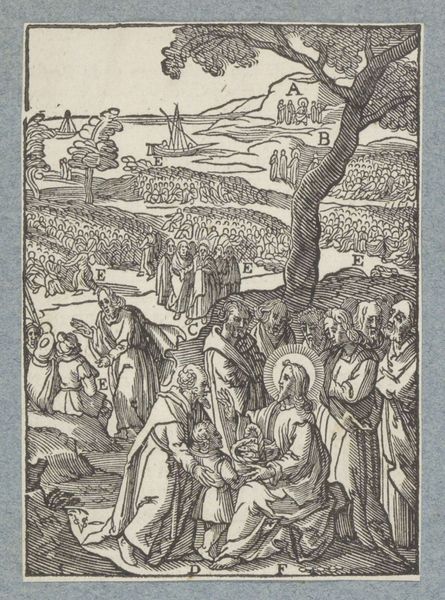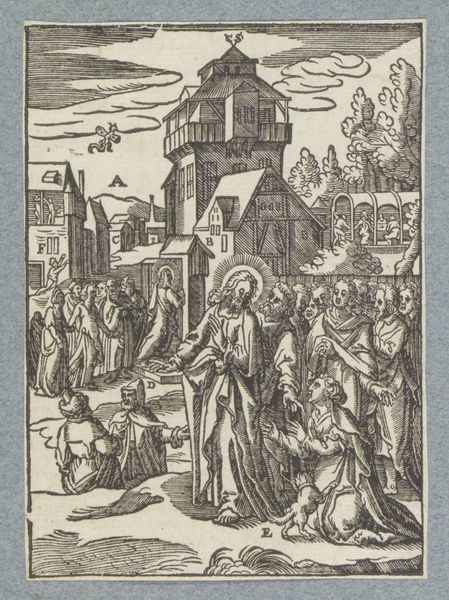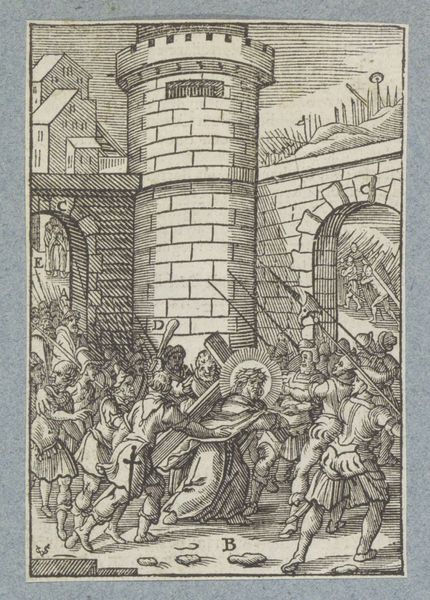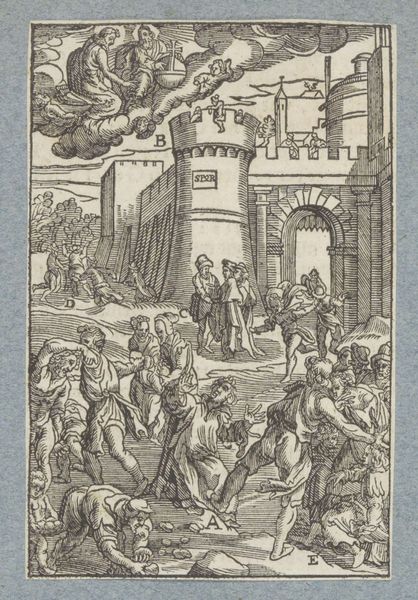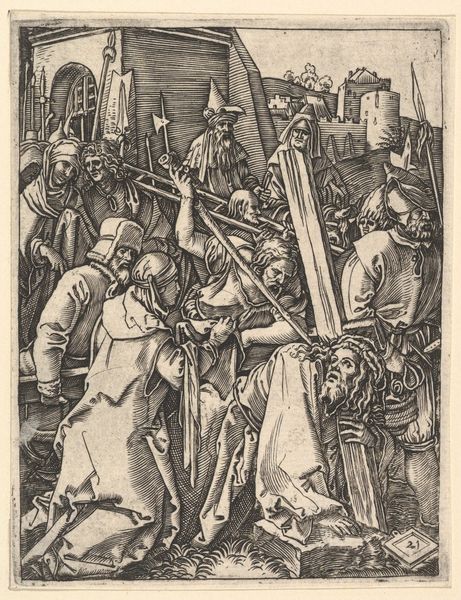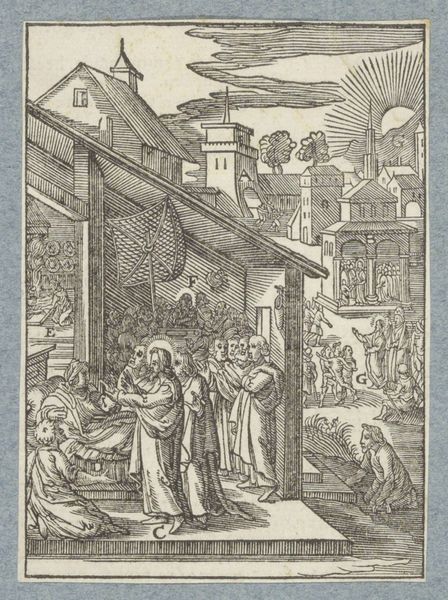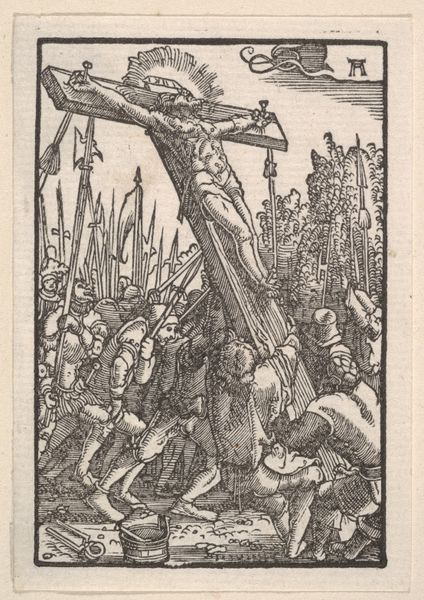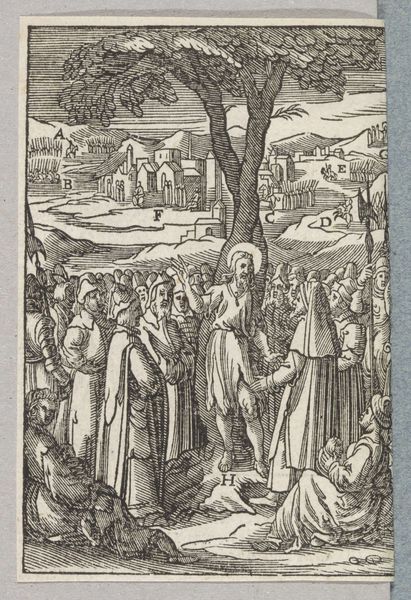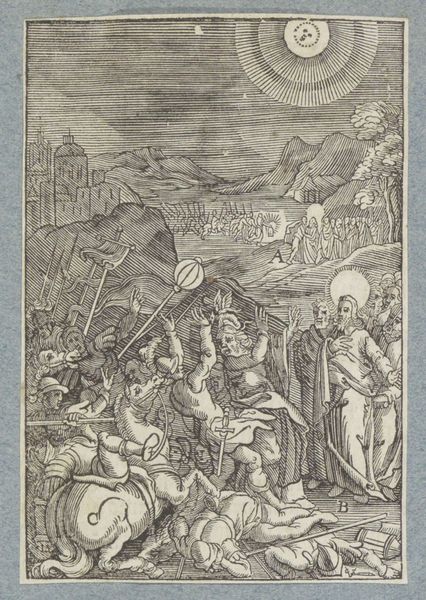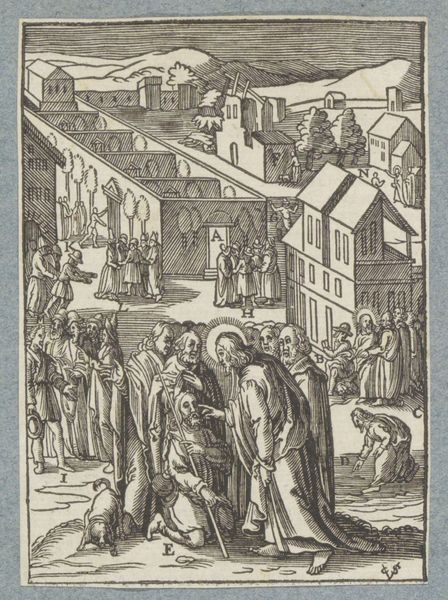
print, etching
#
narrative-art
#
baroque
# print
#
etching
#
landscape
#
figuration
#
history-painting
Dimensions: height 110 mm, width 75 mm
Copyright: Rijks Museum: Open Domain
Editor: This is "Christus valt tijdens de kruisdraging," or "Christ Falling During the Carrying of the Cross," a 1629 etching by Christoffel van Sichem the Second, here at the Rijksmuseum. It's striking how the artist used such fine lines to create such a chaotic and emotional scene. What historical context should we keep in mind when viewing it? Curator: A crucial entry point is the understanding of the Baroque period's socio-political anxieties. How does this print, in its stark portrayal of suffering and violence, reflect broader power dynamics of the time? Consider the representation of Christ – is his vulnerability depicted here a commentary on the oppressed? Editor: I see your point. Christ’s fall does seem to highlight his humanity in the face of brutal power. The crowd looks so menacing, and the landscape seems almost oppressive. It seems a deliberate choice to emphasize Christ's physical weakness. Curator: Exactly. Sichem situates Christ’s fall not just as a religious event, but within the very real social conditions of inequality and resistance. How might a contemporary audience, grappling with their own struggles, interpret this image of a man brought down by injustice? Editor: So, this piece speaks beyond just its religious theme and towards power structures, potentially critiquing authority through Christ's plight? The systematic abuse of power continues. Curator: Precisely. It makes us question the narrative of triumph often associated with religious imagery, urging us to critically examine the social forces at play and their lasting impact. Consider the implications of a leader forced to the ground, how does this challenge concepts of divinity and authority. Editor: It's powerful to consider this image as a lens for reflecting on historical and ongoing power imbalances. I am not a religious person, but this print definitely speaks to me. Curator: Indeed. And perhaps by recognizing the threads that connect past injustices with our current struggles, we are empowered to advocate for a more just future.
Comments
No comments
Be the first to comment and join the conversation on the ultimate creative platform.
